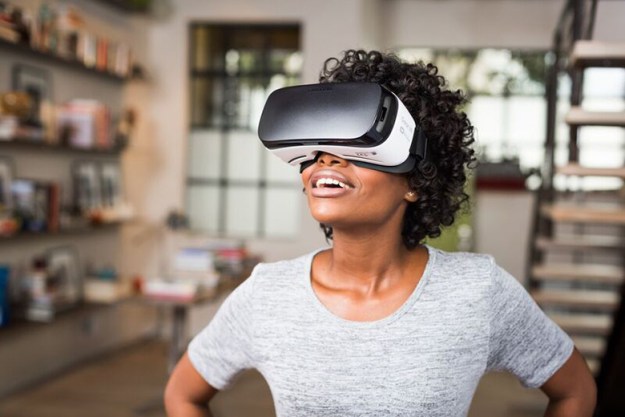With Google’s first stand-alone Daydream VR headset now available on the market via the Lenovo Mirage Solo, the company is now reportedly cooking up a design for a stand-alone augmented reality (AR) headset. That means the headset renders virtual objects, notifications, and more in your view of the real world, enabling services like visual directions as you walk through a city, product placement in your home prior to purchasing furniture, and more.
According to leaked documents, the AR headset is internally known at Google as the A65. It may be powered by a custom Qualcomm QCS603 processor designed for Internet of Things devices packing two “gold” cores clocked at 1.6GHz (Cortex A-75), two “silver” cores clocked at 1.7GHz (Cortex-A55), and an Adreno 615 graphics component. It supports a maximum resolution of 2,560 x 1,440, up to 720p video capture at 60 frames per second and up to 1080p at 30fps.
The specifications also show that Qualcomm’s chip supports OpenGL, OpenCL, and Vulkan graphics. Neural processing is baked right in supporting artificial intelligence through Qualcomm’s Neural Processing Engine and Google’s Android Neural Networks application programming interfaces. Other components include Wireless AC connectivity at 867Mbps, Bluetooth 5.1, and GPS. What’s missing is a 4G LTE or 5G cellular component.
The documents also show that Google may opt for the Qualcomm QCS605 processor instead. This chip packs two “gold” cores clocked at 2.50GHz, six “silver” cores clocked at 1.7GHz, and the Adreno 615 graphics component. It supports up to 4K video capture at 60fps, up to 5.7K video capture at 30fps, and up to 1080p video capture at 60fps. Camera-wise, it can handle two 16MP cameras or a single 32MP camera whereas the QCS603 chip supports two 16MP cameras or a single 24MP camera.
Google’s AR headset is supposedly in its early stages. The documents show that the company began discussing the project with partners at the beginning of the year, including Taiwanese manufacturer Quanta. This latter company is said to be working on a project with AR headset provider Meta called the A66. Given that Meta’s current $1,495 Meta 2 AR headset tethers to a PC, the company’s A66 project could be a high-resolution PC-bound version of whatever Google is cooking up with its A65 project. Think Oculus Rift vs. Oculus Go, but in AR form.
Google entered the AR market once before with the ill-fated Google Glass. Appearing as a pair of spectacles, it presented virtual information in your field of view via a small display mounted in front of your right eye. The device is still in use in the enterprise market, but Google pulled the product from mainstream availability due to privacy concerns over the embedded camera.
Meanwhile, Microsoft is seemingly spearheading the AR headset market with HoloLens. It doesn’t require a tethered PC, and thus relies on a battery lasting up to three hours of active use. Vuzix is a major AR headset player, too, and just introduced its Blade smart glasses to the mainstream market in January. Apple and Samsung are reportedly working on AR-based devices as well.
Editors' Recommendations
- Meet the Qualcomm chips powering Meta’s Quest 3 headset
- Apple’s Reality Pro headset may launch sooner than anyone expected
- Leak reveals how Apple VR headset’s hand tracking may work
- Apple’s secret VR headset just leaked an ingenious idea
- We now know how Apple’s VR headset may handle video, and it’s pretty awesome


